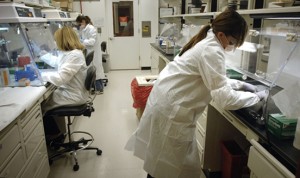Last week, the UCLA-Ronald Reagan Medical Center reported two patients had died after contracting a “superbug.” As investigations continue into how and what caused these deaths and the possible exposure of 175 people, connecting stories to the cases at UCLA are casting a wide net on the problem. The incident has led to a discussion on what these so called “superbugs” are, whether cleaning instructions are sufficient for medical devices, and whether our current health system can deal with these new bacteria.
First off, there is nothing new about these types of bacteria. According to a report in the April 28, 1994, New England Journal of Medicine, “researchers have identified bacteria in patient samples that resist all currently available antibiotic drugs.” The FDA has documented them for the past 15 years and multiple sources have warned against the extensive usage of antibiotics that can create the right situations for these bacteria.
FDA medical officer, Dr. Michael Blum, MD, “resistance increased to a number of commonly used antibiotics, possibly related to overuse of antibiotics. In the 1990s, we’ve come to a point for certain infections that we don’t have agents available.”
It is the classic case of survival of the fittest. The usage of antibiotics is like a hurricane barreling through a region and killing a number of people. The survivors have new experience and knowledge on how to adapt to the situation if it were to arise again. The same logic applies to bacteria. As the antibiotic kills the 99.9% of bacteria we so often hear about in advertisements, the 0.1% that remain have a much better chance of surviving another round of antibiotic drugs. Whether it is by mutation or just random genetic code, these survivors have the means to live in an antibiotic rich environment. In fact, it is a natural phenomenon and one that happens quickly. After the mass production of penicillin in 1943, it only took four years for initial microbes to appear with resistance. It only takes time for bacteria to develop a concrete and hereditable set of genes that make popular antibiotics, used for decades, obsolete.
The main focus of the current case at the UCLA Medical Center is on two contaminated devices called duodenoscopes that are used to check intestinal tracts. After being used, the doctors and staff cleaned both instruments using the manufacturer’s instructions. This is where the contamination happens; the bacteria have adapted to the environment during sterilization and, throughout many generations, have become resilient to it. Cleaning instructions must be updated as bacteria change or a more comprehensive cleaning procedure needs to be implemented before more cases of simple procedures having deadly consequences.
For years there has been talk in the medical world about the shift from infections diseases to preventable medicine. We no longer had to think about the next outbreak of typhoid or diphtheria; doctors could turn their attention to long-term goals to prevent later complications, smoking or obesity. However, the rise of antibiotic resistant bacteria has raised concerns whether or not healthcare may revert back to focusing on infectious diseases but with the added problem of ineffective traditional treatments. When antibiotics were first discovered many health scientists believed they had found the Holy Grail, and in many aspects they had. But through widespread and over usage the possible repercussions may be far worse than during the era of infectious disease.
Health is an important part of unobstructed economic and foreign policy growth. The increasing proliferation of antibiotic resistant bacteria throughout the population is a serious concern, not only for the FDA or the CDC, but also for all aspects of a stable nation. The effectiveness of antibiotics have offered the opportunity over the last four decades to put aside concerns of rampant wild diseases plowing through populations as they did a hundred years ago.
The post The 0.1% of Bacteria appeared first on American Security Project.



